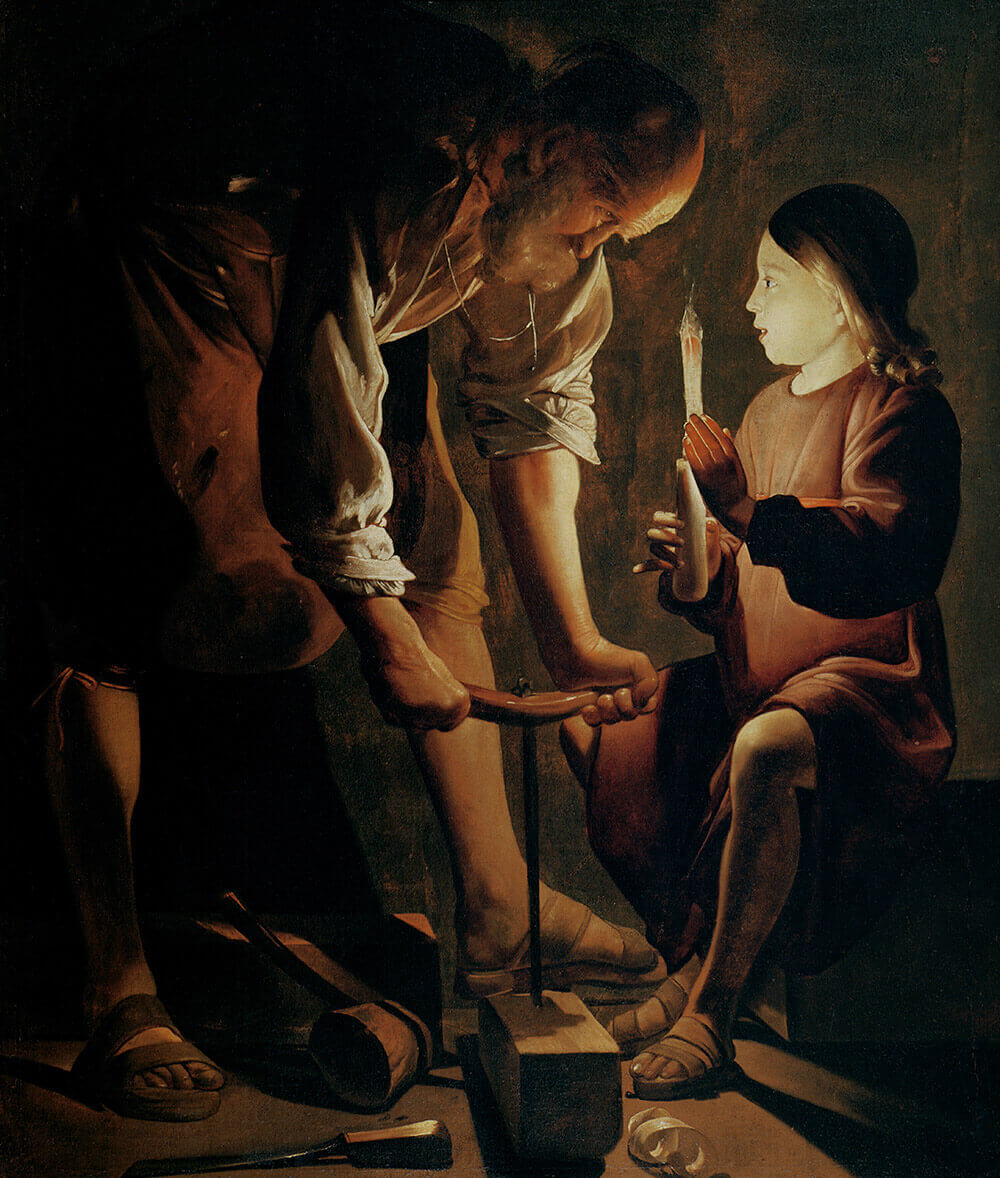Spellbound by tenebrouse lighting
By Al R. Young
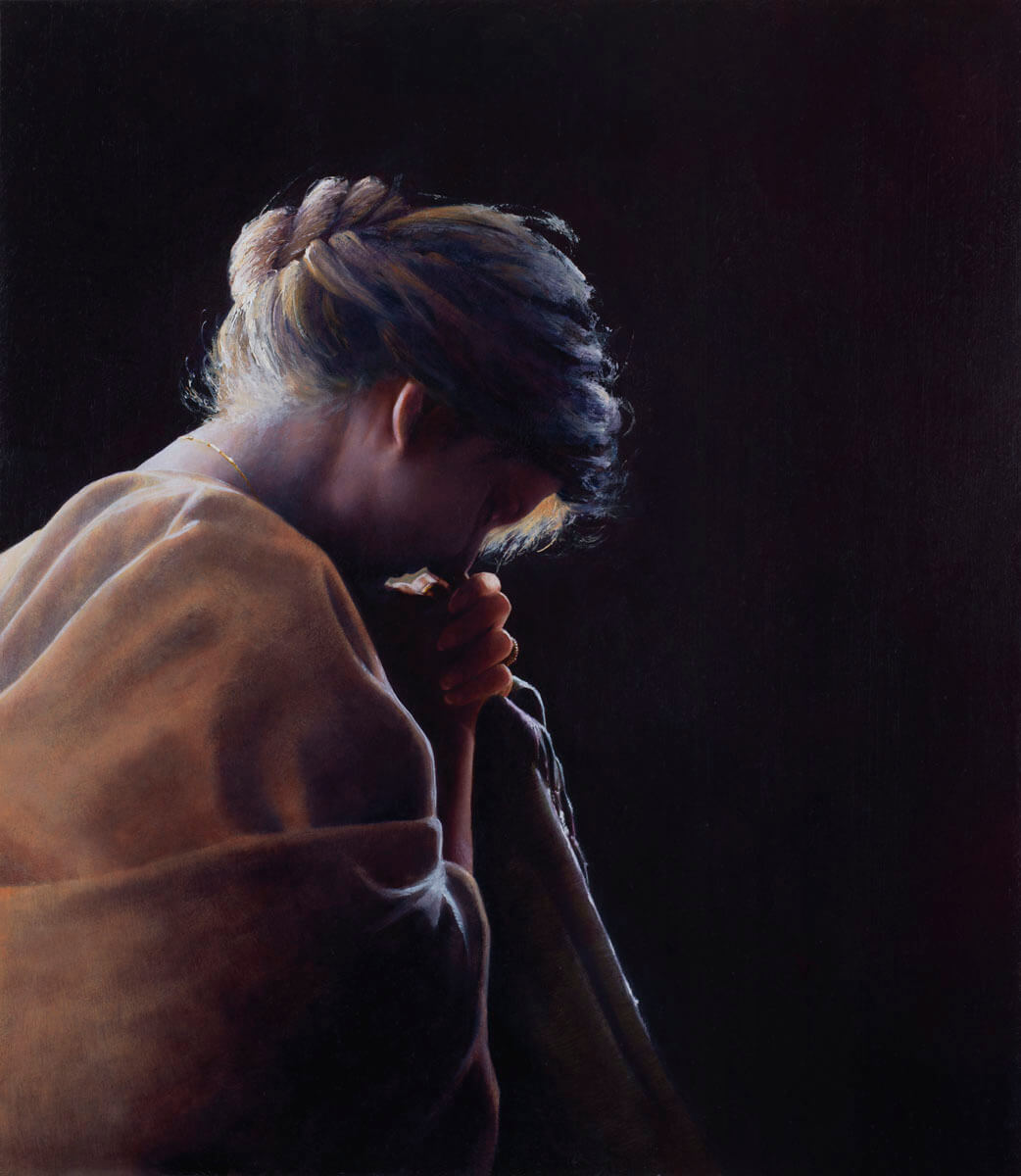 |
| What is Truth? by Al R. Young |
dimensions (unframed width x height)
24 in. x 27.625 in.
support
Panel
milestones
Research begins — 2013 November
Composition begins — 2014 January
Brushwork begins — 2014 January
Painting completed — 2014 May
methodology
The inspiration for a painting can span many years. For as long as I can remember, tenebrouse lighting has held me spellbound whether in painting, film, or daily life. As I consider the way I like to light the subjects I paint, tenebrousness is probably the continuum on which they can all be placed, regardless of the proportion or depth of shadows in a composition. This is so because I enjoy the drama of such contrast for the same reason I enjoy music with a clear vision of where it's going and a happy or fulfilling ending when it gets there. Even so, I do not enjoy the same degree or intensity of contrast in all of my artwork any more than I want a steady diet of such drama in what I read, in the music to which I listen, or in other materials I enjoy. The point, in connection with this commentary about this particular painting, is that, like a motion picture director, an artist must be aware of his or her tastes in lighting in order to more fully understand and respond to—as well as to be able to configure—the story to be told in any artwork.
One of the first things to realize about light is that one's understanding of it is not simply understanding how light behaves, but how lighting affects one's response to a particular subject; in other words, how the observer behaves relative to light. Discussions about the behavior of light are valuable because such knowledge can help the artist more fully see what he or she is looking at, which can result in a more effective rendering of the subject. (I use the term effective instead ofaccurate because accuracy in this context pertains to the objectives and stylistic interpretation of the artist, not necessarily the appearance of the subject, in terms of the idea that quality inheres in some kind of photo-realistic representation of the subject. And accurate rendering consists with the artist's intentions concerning what he or she wants to express about the subject.)
Another thing to realize about light is that understanding it, understanding its relationship to an observer's emotional response to a subject, understanding how to manipulate light and subject, and understanding and mastering how to render these things is just as much of a lifetime journey as the pursuit of art is a lifetime journey. Reading about these things, talking about these things, obtaining instruction and opinion about these things (frequently the same thing) are important to greater or lesser degree, but there is no substitute for experience in these matters. And that takes time and mistakes as well as successes.
As part of my reading for both pleasure and profession, I enjoy cutting across disciplines because doing so increases the likelihood of discovering inspiration and ideas that are at least as delightful as the substance of material whose label corresponds with one's questions or interests. For example, the following excerpt is just one of the many jewels I discovered in Making Movies by Sidney Lumet (1995):
The Verdict Andrzej, Bartkowiak, photographer. The movie was about a man''s salvation, his fight to rid himself of his past. I wanted as &puot;old"a look as possible. . . . Light mattered enormously. One day I brought a beautiful edition of Caravaggio's painting to my meeting with Andrezej. I said, "Andrzej, there's the feeling I'm after. There's something ancient here, something from a long time ago. What is it? Andrzej studied the pictures. Then, with his charming Polish accent, he pinpointed it. "It's chiaroscuro,", he said. A very strong light source, almost always from the side, not above. And on the other side, no soft fill light, only shadows. Once in a while he'll use the reflective light of a metal source on the dark side." He pointed to young boy holding a golden salver. On the shadow side of the boy's face, one could discern a slight golden hue. And that's what Andrzej carried out in the lighting of the movie. (p. 91)About a year before I embarked on the project that resulted in What is Truth?, I was sifting through images from a photo shoot conducted several years earlier, and a compositional possibility jumped out at me, all but waving its arms and stamping its feet while demanding to be brought into existence. And because the subject involved prayer, which, of all the things in life that are associated with darkness—total darkness —was an opportunity to give in to tenebrousness with the contrast-slider on the image pushed almost to black. How could I resist!
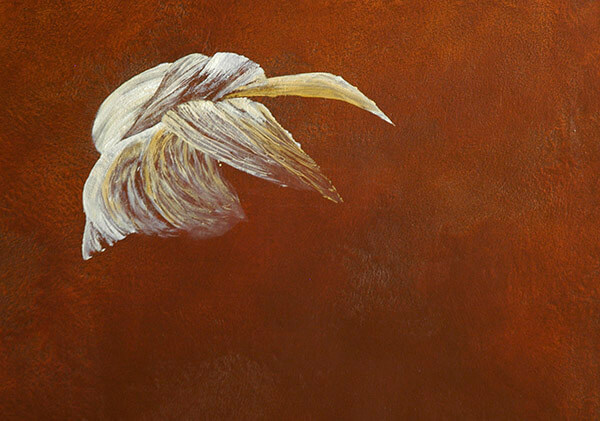 |
| This photo was taken at the conclusion of the first painting session. |
I paint by creating an underpainting followed by glazes of various colors, opacities, and techniques, being greatly inspired by the technique of such artists as John William Waterhouse. Such a methodology, of course, requires that the work of painting be decomposed into stages, layers, and areas, with the desired impression to be made by the outcome materializing only gradually. Thus, while attending to detail along the way, it is necessary to hold in view the outcome of the whole so that painstakingly rendered detail can coexist with that which is rendered only by suggestion or flourish. The balance between detail and summary exerts a powerful influence on the lifelike quality of the painting; that is, the degree to which the painting can serve as a vehicle for the influence of the Spirit that inspired it in the first place.
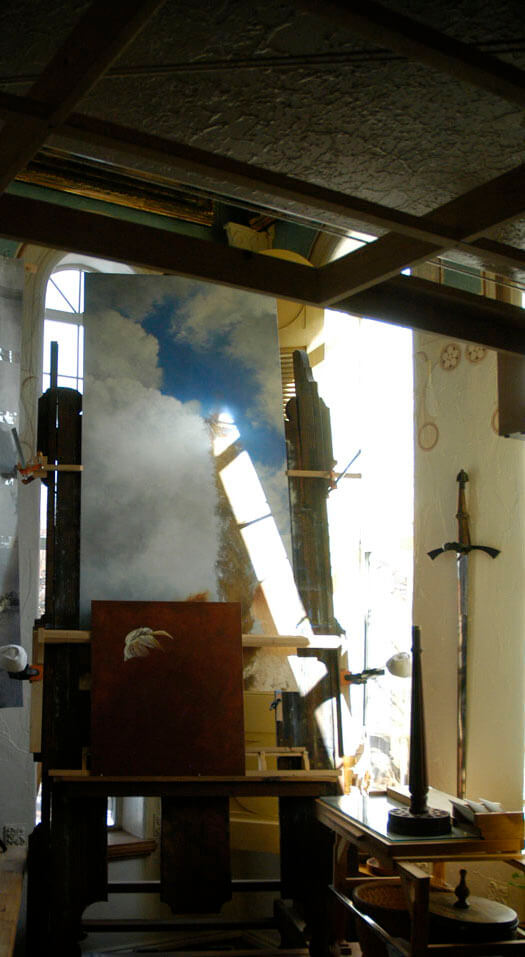 |
| This shows the configuration of the studio on the day of the first painting session for this project. Under Whose Wings Thou Art Come to Trust was the major painting project I was juggling at the time I started the brushwork for What is Truth?. |
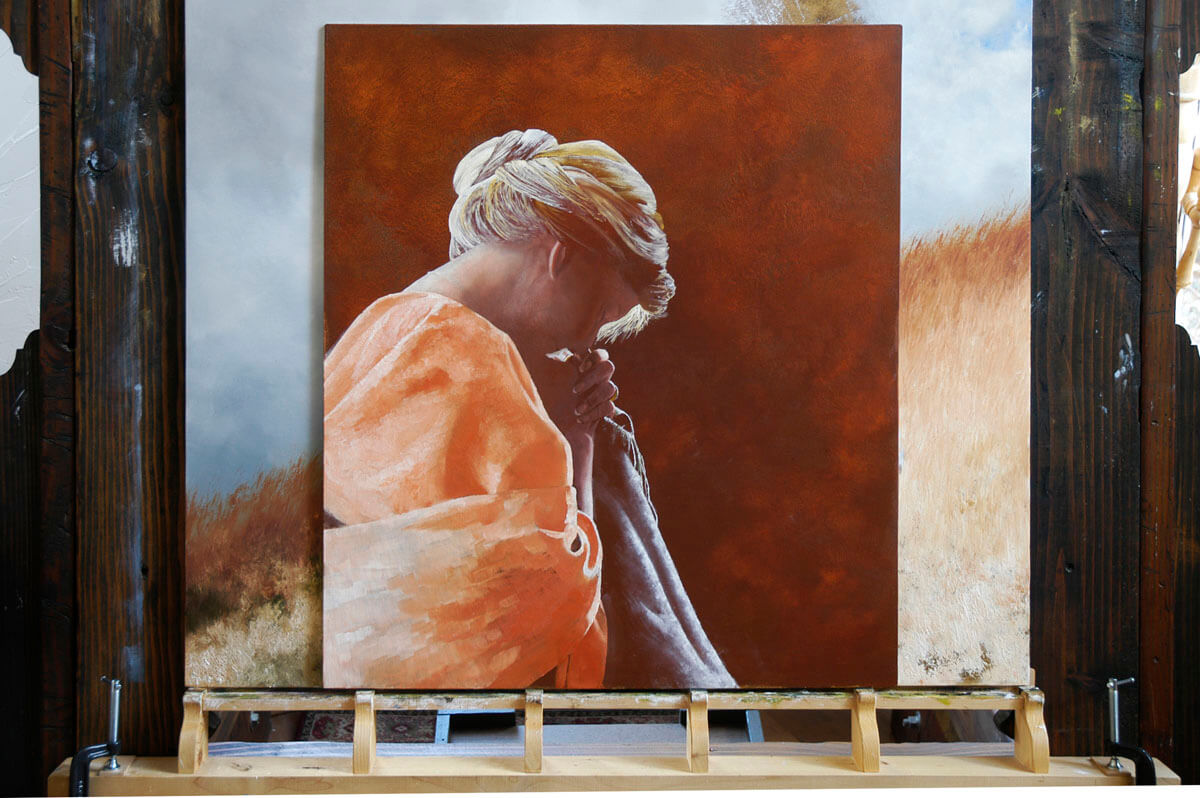 |
| The completed underpainting for the figure. |
This journal entry from 2014 April 28 gives a fair indication of the kind of brushwork involved in completing the painting:
Added a clear glaze to the upper part of the figure so that I could see the colors, in place already, as a whole, then embarked on cleaning up the splatter and smears from the hair-painting of the previous session. After that I went to work on the hair, adding the burned-out highlights on the braid above the neck, working on the braided bun and the braids on the back of the side of the head, added highlights and strands on the neck, and then added mid-tone highlights in the shadows. I added a light yellow color to the highlighted hair in front of the face, then added highlight strands there (curving the existing strands back into the face and uniting them with the hands, and added highlight strands to the hair above the forehead and along the top of the head.Throughout this project, as with so many others, I thought often about something Arnold Friberg once said, which I paraphrase here: The fire or spirit that suffuses a painting is not added at the end, but is there from the very first. If it is not there, nothing can compensate for its absence. It cannot be added at the end. (See "The Prayer at Valley Forge" by Arnold Friberg - Ensign Magazine vol. 3 no. 2 (Salt Lake City: The Church of Jesus Christ of Latter-day Saints, February 1973), center insert.)
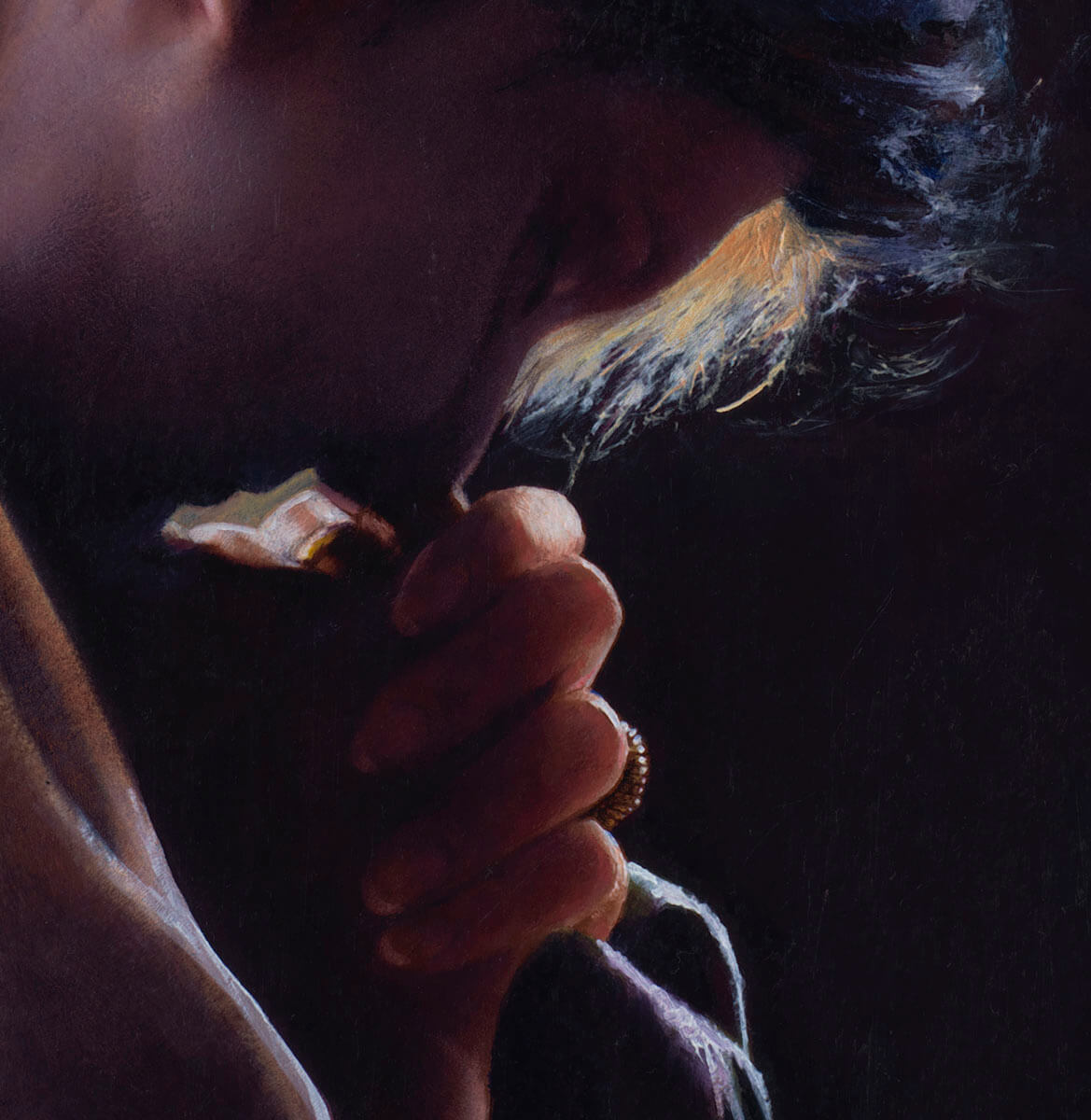 |
| Detail from What is Truth? |
Tags: What Is Truth, 2019, Inspiration and creativity, Project commentaries, Tips and techniques, Women of the Bible Art Collection
Browse articles by year: 2025 . 2024 . 2023 . 2022 . 2021 . 2020 . 2019 . 2018 . 2017 . 2016 . 2015 . 2014 . 2013 . 2012 . 2011 . 2010 . 2009 . 2008 . 2007 . 2006 . 2005 . 2004 . 2003 . 2002 . 2001 . 2000 . 1999 . 1998 . 1997 . 1996
Browse articles by topic: Art lessons . BenHaven Archives . Blank art diaries . Fine art photography . Framing . Illustration . Inspiration and creativity . Isles of Rune . Limited Editions Collection . My Fathers Captivity . News . Novellas . Oil paintings and prints . Operations announcements . Orders and shipping . Overview . Portfolios . The Papers of Seymore Wainscott . Project commentaries . Recipes by Nancy Young . Recommended reading . Recommended viewing . Temple artworks . The Storybook Home Journal . Tips and techniques . Tools supplies and operations
Browse articles by topic: Art lessons . BenHaven Archives . Blank art diaries . Fine art photography . Framing . Illustration . Inspiration and creativity . Isles of Rune . Limited Editions Collection . My Fathers Captivity . News . Novellas . Oil paintings and prints . Operations announcements . Orders and shipping . Overview . Portfolios . The Papers of Seymore Wainscott . Project commentaries . Recipes by Nancy Young . Recommended reading . Recommended viewing . Temple artworks . The Storybook Home Journal . Tips and techniques . Tools supplies and operations
